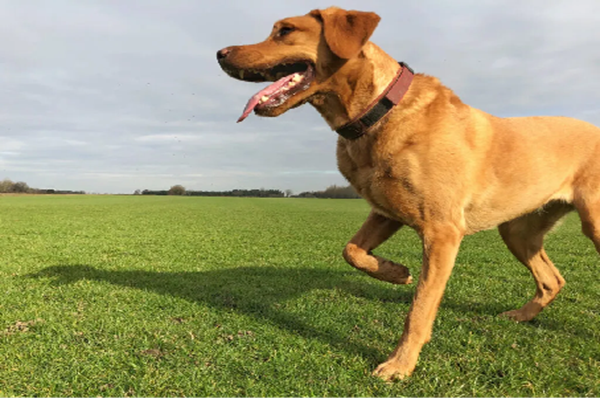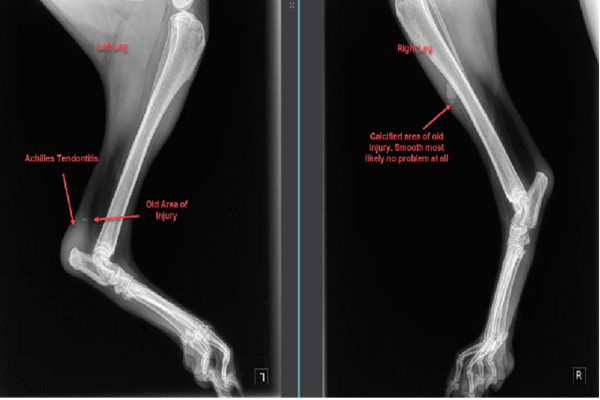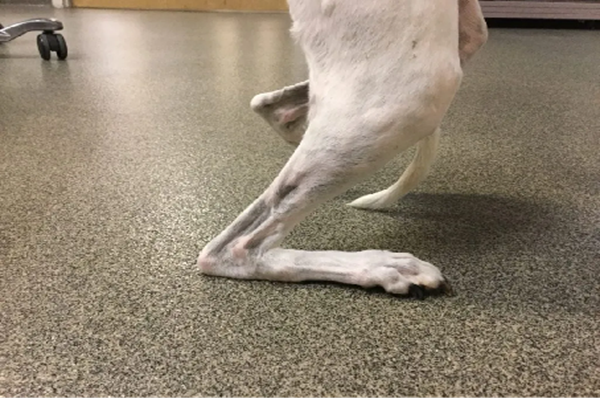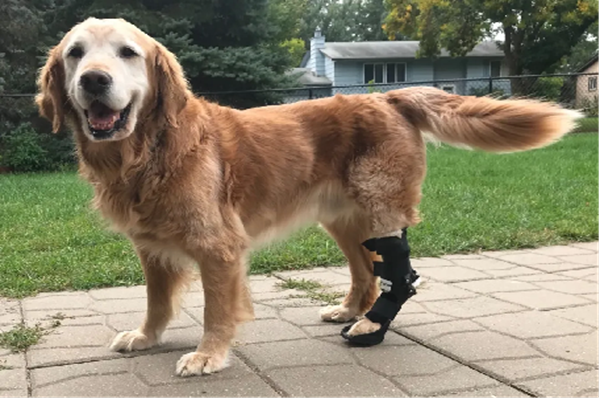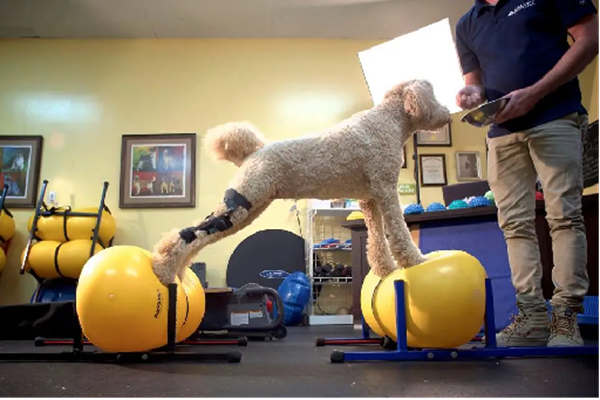What should I do if my dog’s tendon is pulled?
ONE
Most dogs are sports loving and running animals. When they are happy, they jump up and down, chase and play, turn and stop quickly, so injuries occur frequently. We are all familiar with a term called muscle strain. When a dog starts to limp while playing, and there are no issues with X-rays of the bones, we think it’s a muscle strain. Ordinary muscle strains can recover in 1-2 weeks for mild cases and 3-4 weeks for severe cases. However, some dogs may still occasionally feel hesitant to lift their legs even after 2 months. Why is this?
Physiologically speaking, muscles are divided into two parts: the abdomen and tendons. Tendons are made up of very strong collagen fibers, used to connect muscles and bones in the body, generating strong strength. However, when dogs engage in intense exercise, once the pressure and strength exceed their limits, the supporting tendons may be injured, pulled, torn, or even broken. Tendon injuries can also be divided into tears, ruptures, and inflammations, manifested as severe pain and limping, especially in large and giant dogs.
The causes of tendon injuries are mostly related to age and weight. As animals age, their organs begin to degrade and age, and chronic damage to tendons occurs. Insufficient muscle strength can easily lead to tendon injuries. In addition, prolonged play and excessive physical exertion can lead to loss of control and excessive stress, which is the main cause of tendon injuries in young dogs. Muscle and joint strain, excessive fatigue and vigorous exercise, resulting in tendons stretching beyond the optimal length; For example, racing dogs and working dogs often become victims of excessive tendon strain; And tendon tearing may lead to increased pressure between the tendon toes, decreased blood circulation, and the possibility of inflammation and bacterial infection, ultimately resulting in tendinitis.
TWO
What are the symptoms of a dog’s tendon injury? Limping is the most common and intuitive manifestation, which prevents smooth and normal movement. Local pain may occur in the injured area, and swelling may not necessarily appear on the surface. Subsequently, during joint bending and stretching tests, doctors or pet owners may feel resistance from the pet. When the Achilles tendon is damaged, the pet will place its paws flat on the ground and may drag its feet while walking, known as the “plantar posture”
Because the function of tendons is to connect muscles and bones together, tendon injuries can occur in many areas, with the most common being Achilles tendon injury and biceps tendonitis in dogs. Achilles tendon injury can also be divided into two types, A: traumatic injury caused by intense activity. B: Non traumatic effects caused by aging of the body. Large dogs are more prone to Achilles tendon injury due to their large weight, high inertia during exercise, strong explosive power, and short lifespan; Biceps tenosynovitis refers to inflammation of the biceps muscle, which is also common in large dogs. In addition to inflammation, this area may also experience tendon rupture and sclerosis.
The examination of tendons is not easy, as it involves the touch of a doctor or pet owner to check for swelling and deformities in this area, X-ray examination for bone fractures that affect muscles, and ultrasound examination for tendons that are severe enough to break. However, the misdiagnosis rate is still very high.
THREE
For severe tendon injuries, surgical repair may be the best method currently available, with most surgeries aimed at suturing the tendon back onto the bone. For pets with minor tendon strains or sprains, I believe rest and oral medication are better options to avoid secondary injuries caused by surgery. If it is severe biceps tendonitis, non-steroidal anti-inflammatory drugs may be used for a long time.
Any tendon injury requires quiet and prolonged rest, and some may take 5-12 months to recover, depending on the pet owner’s care and the severity of the disease. The best situation is for pet owners to avoid running and jumping, walking under heavy loads, and any activities that may overuse muscles and joints. Of course, completely restricting the slow movement of dogs is also detrimental to diseases, as muscle atrophy and excessive reliance on braces or wheelchairs may occur.
During the recovery process of tendon damage, gradual exercise usually begins 8 weeks after rest, including hydrotherapy or swimming with pet owners in a safe environment; Muscle massage and repeated bending and straightening of joints; Walking slowly for a short time and distance, tied to a chain; Hot compress the sick area multiple times a day to stimulate blood flow. In addition, oral administration of high-quality chondroitin is also very important, and it is recommended to supplement supplements rich in glucosamine, methylsulfonylmethane, and hyaluronic acid.
According to statistics, approximately 70% to 94% of dogs can recover sufficient activity within 6 to 9 months. So pet owners can rest assured, patient, persevere, and eventually get better.
Post time: Jul-05-2024

